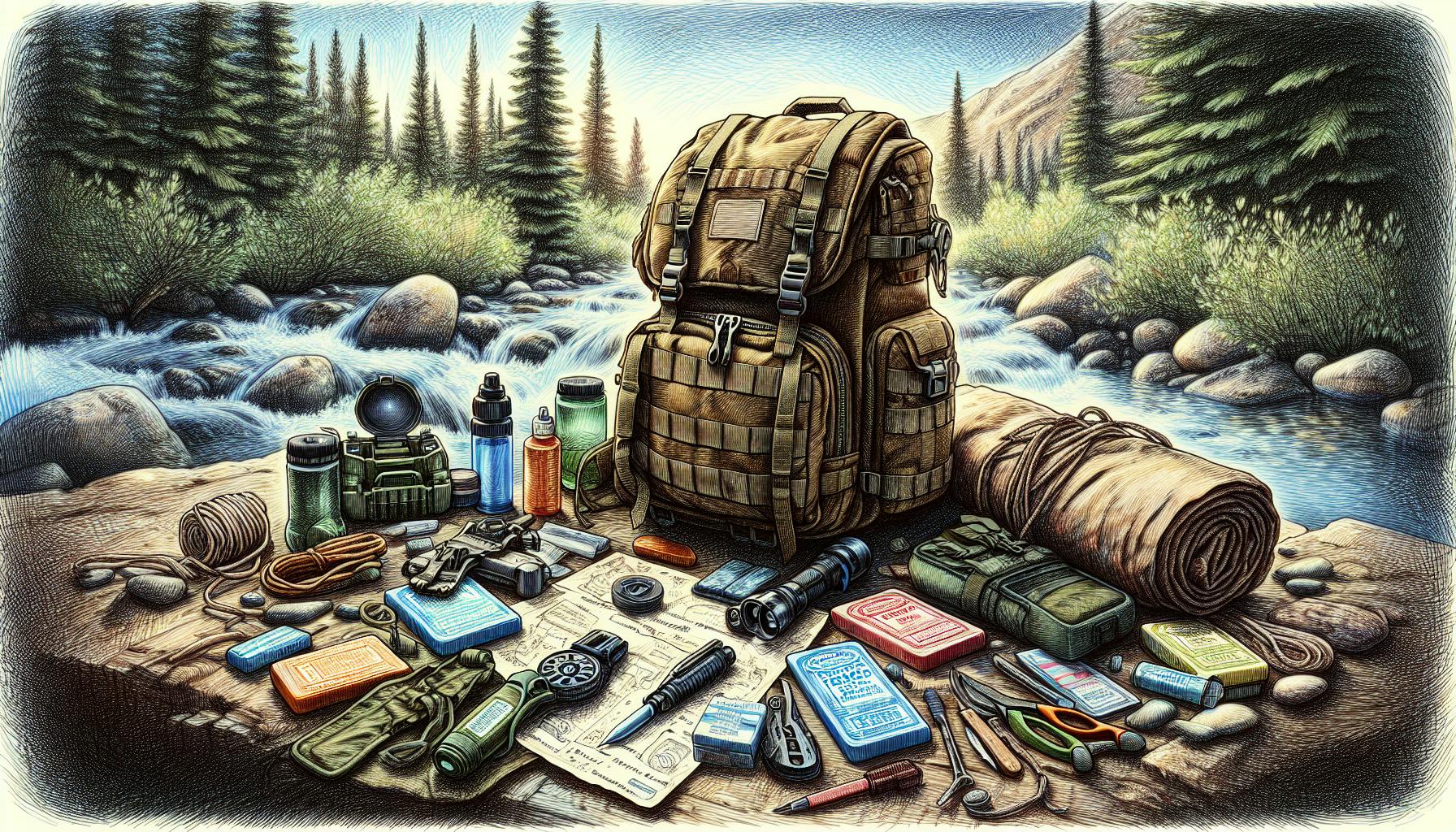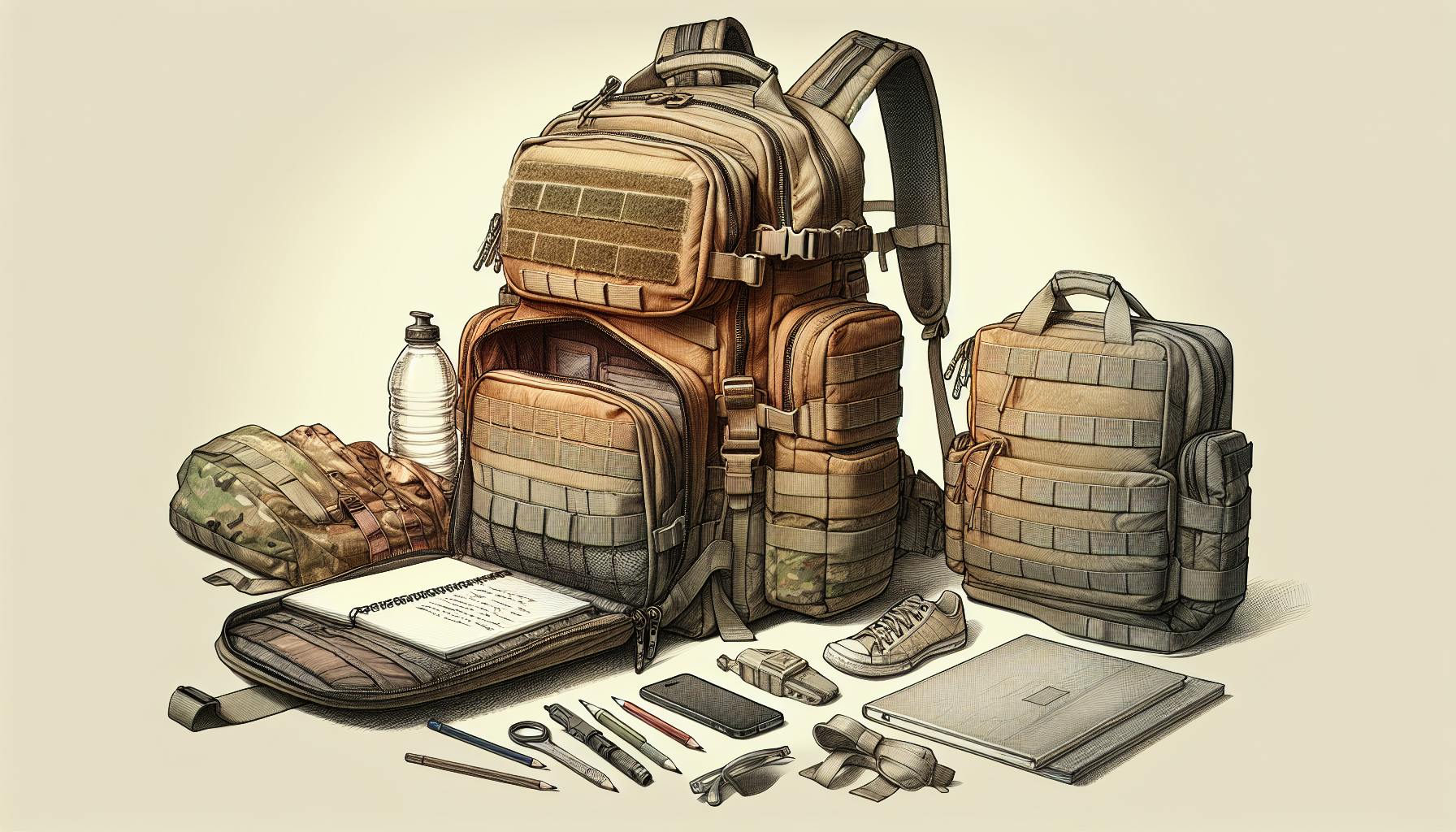Introducing Survival Lighters
Survival lighters are an essential tool for every emergency preparedness kit and bug out bag. They allow you to start a fire in any conditions, even wet or windy weather. Several types of survival lighters exist including ferrocerium rod lighters, plasma lighters, and waterproof stormproof lighters. WeLovePrepping provides in-depth reviews and recommendations to help you choose the best survival lighter for your needs. Having a reliable lighter can truly be the difference between life and death in a wilderness or urban survival situation.
What Are Survival Lighters?
Survival lighters are specially designed to light in extreme conditions like high altitude, underwater, or high winds where ordinary lighters would fail. They often have features like waterproofing, windproofing and extra long burn times. Survival lighters are a must-have for camping, hiking, emergency preparedness kits, and survival situations. The main types include ferrocerium rod lighters, plasma lighters, butane torch lighters, and floating stormproof lighters. Survival lighters are far more reliable than typical disposable lighters which can easily fail in harsh outdoor conditions.
Key Features To Look For
Some key features to look for when choosing a high quality survival lighter include:
- Windproofing - prevents flame from being blown out in storms or high winds
- Waterproofing - works even after being submerged underwater
- Long burn time - retains ability to light after years of storage
- Reliable sparking - ferrocerium and electric sparking mechanisms ignite thousands of times
- Durable casing - protects fuel supply and wick from damage
- Refillable - allows fuel to be refilled when empty for continued use
- Floats - crucial for water usage as the lighter won't sink if accidentally dropped
- One-hand operation - easy to use with gloves on or when injured
Carefully evaluating these features will help you select the most reliable survival lighter.
Types of Survival Lighters
The main types of survival lighters include:
- Ferrocerium rod lighters - create sparks when rod is scraped with included metal striker
- Plasma lighters - generate an adjustable plasma arc as the flame
- Butane torch lighters - produce a powerful, concentrated butane gas flame
- Stormproof/floating lighters - waterproof and windproof with specialized wicks
- Refillable lighters - reusable fuel chambers allow fuel to be refilled
- Electric arc lighters - use battery power to ignite a spark between electrodes
Each type has pros and cons to consider for your specific needs.
Recommended Top Brands
Based on expert testing and reviews, some top recommended brands for survival lighters are:
- UST Stormproof Floating Lighter - fully waterproof and windproof stormproof lighter
- Zippo Emergency Fire Starter - compact ferrocerium rod lighter with reliable sparking
- Survive Outdoors Longer Floating Lighter - affordable and reliable floating lighter
- TEC Accessories P-7 Suspension Plasma Lighter - versatile dual arc plasma lighter
- Scorch Torch Scorpion Butane Torch - adjustable flame butane torch lighter
- WeLovePrepping Eagle Butane Lighter - refillable, adjustable flame survival lighter
- Light My Fire Swedish FireSteel 2.0 - ferrocerium fire starter with excellent sparking
- Coghlans Waterproof Floating Lighter - stormproof floating lighter on a budget
These top brand names have proven track records for quality and reliability.
How To Use a Survival Lighter Effectively
Here are some tips for using your survival lighter safely and effectively:
- Practice ahead of time to get comfortable with operation
- Properly store upright and keep fuel chamber sealed to prevent evaporation
- Protect lighter from water, dirt and extreme temperatures
- Have backup lighters like stormproof matches as a redundancy
- Maintain by checking fuel, wiping down, and testing periodically
- Use proper fuel type for lighter such as butane or lighter fluid
- Have dry tinder material ready to help ignite kindling
- Keep hands and body away from flame when lighting
Advanced training and practice will ensure you can operate your lighter reliably in an emergency.
Choosing the Right Survival Lighter
With many types and brands available, here are the key factors to consider when choosing a survival lighter:
- Assess expected weather and environment - windy, wet, high altitude?
- Compare size options for desired portability
- Research if features like waterproofing are truly reliable
- Check brand reputation and reviews for that specific model
- Determine which fuel type fits your needs - butane, plasma arc, ferrocerium?
- Factor in your budget - prices range from $5 to $100+
- Prioritize durability and longevity for emergency preparedness
- Personally test lighters yourself before fully relying on them
- Have backup lighters and fire starting methods in case of failure
- Read expert reviews from trusted sites like WeLovePrepping
Taking these factors into account will help you select the ideal survival lighter.
Weather Resistance
For maximum weather resistance, look for:
- Stormproof lighters - fully waterproof and windproof
- Plasma arc lighters - work in any conditions
- Avoid cheap disposable lighters with no waterproofing
- O-ring seals prevent water from entering fuel chamber
- Wind guards prevent flame from being blown out
- Floating lighters work well when often near water
Weather resistance ensures the lighter works when you need it most.
Reliability
Reliability is critical for a survival lighter. Look for:
- Quality sparking mechanisms that ignite thousands of times
- Multi-year shelf life without degradation
- Consistent positive reviews of ignition ability
- Refillable lighters with reusable fuel chambers
- Field test lighters yourself to confirm ignition ability
- Have backup lighters in case your primary fails
Carefully evaluate reliability before depending on a lighter for emergencies.
Ease of Use
For ease of use:
- Larger sizes are easier to grip with gloves or numb fingers
- Adjustable flames let you control intensity as needed
- Child safety locks prevent accidental ignition
- One-hand operation for use when injured or impaired
- Simple and intuitive sparking buttons or switches
- Fuel windows indicate how much fuel remains
- Lanyard holes allow lighter to be worn around neck
An easy to use lighter is critical for emergency situations where fine motor skills may be impaired.
Fuel Type
When evaluating fuel types:
- Butane provides a hot concentrated flame but doesn't work as well in freezing temperatures
- Standard lighter fluid can evaporate over time if not properly sealed
- Refillable lighters allow reuse of the same lighter body over and over
- Ferrocerium rods last for thousands of strikes but require a sparking mechanism
- Electric arc lighters use battery power to generate a plasma arc flame
- For long term storage, ferrocerium rods, plasma arcs, or stormproof lighters are best
Each fuel type has advantages and disadvantages depending on expected usage and conditions.
Top Recommended Brands
Specific top recommended brands:
- UST makes the highest rated floating stormproof lighters
- Zippo has classic refillable windproof lighters with a strong brand reputation
- Scorch is known for durable and reliable torch-style butane lighters
- TEC Accessories makes high quality plasma arc lighters
- WeLovePrepping sells affordable butane and null lighters
- Survive Outdoors Longer is great for budget floating lighters
- Light My Fire offers stormproof matches as a backup fire starting option
- Coghlan's is renowned for emergency ferrocerium fire starter rods
These brands have proven themselves through extensive testing and reviews.
Maintaining and Using Survival Lighters
Properly maintaining your survival lighter ensures it works flawlessly when needed most:
- Store upright in a sealed, waterproof container
- Periodically wipe down and air out to prevent fuel evaporation
- Test ignition periodically to confirm proper functioning
- Keep fuel chamber filled to prevent sputtering flame
- Replace flint or electrode when sparking weakens
- Bring extra fuel and o-rings for field repairs
- Practice use ahead of time to build experience
- Have dry tinder on hand to help ignition
- Avoid burns by keeping hands clear of flame
Proper maintenance and training will ensure you get fire when you need it.
Storing Your Lighter
For proper storage:
- Keep in a sealed, waterproof container
- Store upright to soak wicks and keep flint dry
- Keep in interior pocket, away from exterior exposure
- Don't allow fuel chamber to stay empty for extended periods
- Bring spare o-rings and seals in case they wear out
- Prevent dirt or debris buildup near sparking wheel or flint
Taking steps to store your lighter correctly will help ensure it functions properly for years to come.
Maintenance Tips
Recommended maintenance tips:
- Periodically air out and wipe down to prevent fuel evaporation
- Replace wick if fraying or not absorbing fuel well
- Add new flints if sparking weakens
- Test lighters every 6-12 months to confirm functionality
- Refill fuel before it sputters out while lighting
- Clean electric arc lighter electrodes and wheels
- Only use proper fuel type for that specific lighter
Routine maintenance greatly extends the usable lifespan of your lighter.
Usage Best Practices
For usage:
- Have dry tinder material ready to help ignition
- Keep hands and body clear of flame due to risk of burns
- Initially angle flame down to heat tinder
- Cup hands around lighter flame if windy
- Adjust flame intensity up or down as needed
- Allow time for wick to absorb fuel if newly filled
- Consider gloves in freezing weather to protect hands
- Have multiple backup lighters in case of failure or loss
Develop experience and skill using your lighter in different conditions. This helps ensure fire starting ability when you need it most.
Safety Tips
Lighter safety tips:
- Keep lighters away from children and secured with child locks
- Ensure proper ventilation if using indoors
- Never leave a lit lighter unattended
- Allow lighter to fully cool before storing after use
- Avoid cheap lighter models with potential safety issues
- Properly dispose of used lighters, don't litter in nature
Make safety your top priority when handling and storing survival lighters.
Final Thoughts
In summary, a quality survival lighter is an essential item for all emergency kits and bug out bags. Take care in selecting the right model with proper weather resistance, reliability, ease of use, and fuel type. Maintain your lighter by storing properly, routine maintenance, and periodically testing operation. Practice develops the skills needed to use your lighter effectively in adverse conditions. Read WeLovePrepping's lighter reviews and guides for expert recommendations on the best survival lighter for your needs. Stay prepared with the fire making ability to overcome any situation.


